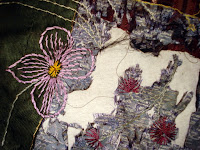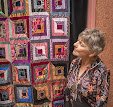The Ogier family in Guernsey County, Ohio
In 1806, the first party of
immigrants, mainly members of the Sarchet family, from Guernsey in the British Channel Islands arrived in the then
newly-settled area of North America which later became Guernsey County, Ohio.
They were followed, in 1807, by members of another Guernsey
family, the Ogiers. A fascinating, and possibly apocryphal, story surrounds the
arrival, probably in 1808, of another member of the Ogier family named Thomas.
This story has become part of Ogier family lore.
In 1938, Alfred S. Campbell, an
American cattle-breeder and journalist, visited Guernsey in the Channel Islands and was entertained by
Thomas Ogier at their family home, Les Duvaux, where Mr. Ogier related the
story of his ancestor, also called Thomas, who had been forced to leave
Guernsey as a wanted man. An account of his visit to the Ogiers, including this
story, appears in Campbell’s
book, Golden Guernsey, which was
published in 1938. This is how the story goes:
At the end of the eighteenth
century, the Napoleonic wars were being waged in Europe and Guernsey
became a base for allies of the English, including Russians. This caused
difficulty and disruption on the island as food became scarce and the
poorly-disciplined soldiers took to pillaging and theft. Thomas, an affluent
farmer, returning to his home from a hunting expedition, found a Russian
soldier on his land and shot at him, intending only to wound him. The soldier
made it back to his base but, having identified his attacker, died of his
injuries, Thomas Ogier therefore became a wanted man and fled from his home
before he could be arrested. He first went to France
and later took ship to America
and, after some wanderings, joined other family members in Cambridge, Ohio.
Relating this story to Alfred Campbell, Mr. Ogier told him that ‘…in all his
wanderings Thomas Ogier carried with him one relic of his home – the family
cradle!’ One might doubt the practicality of a fugitive from the law choosing
to burden himself with a wooden cradle, carrying it to France, then over the Atlantic to America; but
the cradle is real enough and is in the possession of the Guernsey County
Historical Society!
Enquiries are in train and if I
can get a pic of the famous cradle (and permission to use it, of course) I’ll
post it here.



